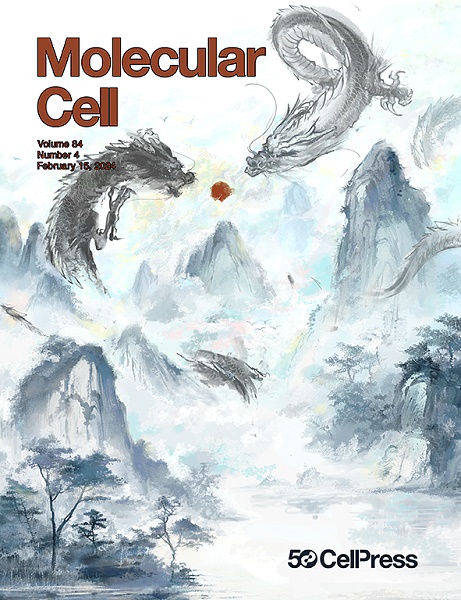STING: Stay near to STIM(1) neuroprotection
IF 14.5
1区 生物学
Q1 BIOCHEMISTRY & MOLECULAR BIOLOGY
引用次数: 0
Abstract
In a recent publication in Cell, Woo et al.1 report that stimulator of interferon genes (STING) links inflammation with glutamate-driven excitotoxicity to induce ferroptosis, identifying a mechanism of inflammation-induced neurodegeneration and also a novel candidate therapeutic target for multiple sclerosis.
STING:靠近 STIM(1) 神经保护装置
在最近发表于《细胞》(Cell)的一篇文章中,Woo 等人1 报告说,干扰素基因刺激器(STING)将炎症与谷氨酸驱动的兴奋毒性联系起来,诱导铁变态反应,从而确定了炎症诱导神经退行性变的机制,也是多发性硬化症的一个新的候选治疗靶点。
本文章由计算机程序翻译,如有差异,请以英文原文为准。
求助全文
约1分钟内获得全文
求助全文
来源期刊

Molecular Cell
生物-生化与分子生物学
CiteScore
26.00
自引率
3.80%
发文量
389
审稿时长
1 months
期刊介绍:
Molecular Cell is a companion to Cell, the leading journal of biology and the highest-impact journal in the world. Launched in December 1997 and published monthly. Molecular Cell is dedicated to publishing cutting-edge research in molecular biology, focusing on fundamental cellular processes. The journal encompasses a wide range of topics, including DNA replication, recombination, and repair; Chromatin biology and genome organization; Transcription; RNA processing and decay; Non-coding RNA function; Translation; Protein folding, modification, and quality control; Signal transduction pathways; Cell cycle and checkpoints; Cell death; Autophagy; Metabolism.
 求助内容:
求助内容: 应助结果提醒方式:
应助结果提醒方式:


